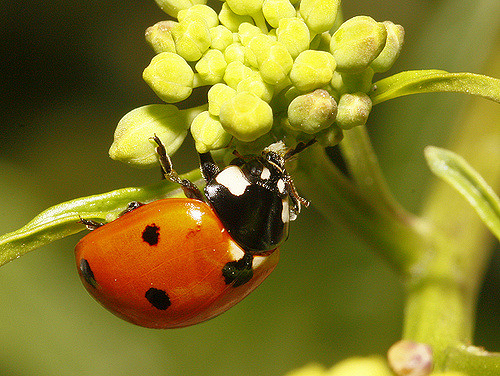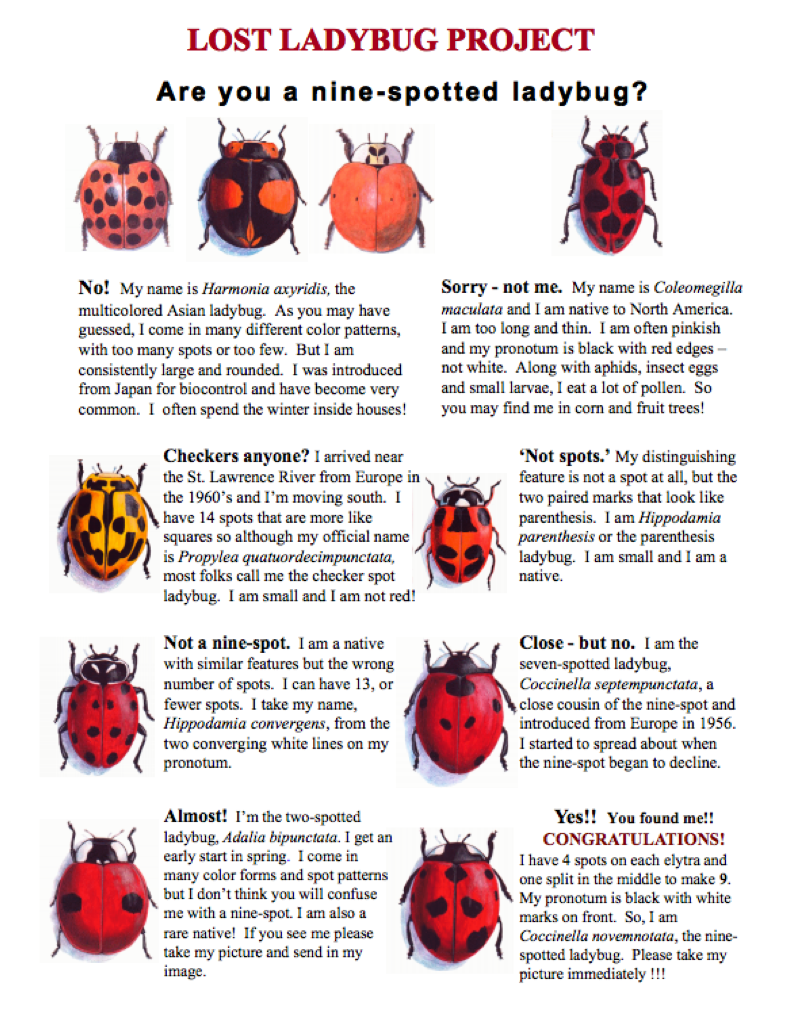Help Cornell Researchers Find the Lost Ladybugs
Posted on Categories Discover Magazine

By: Megan Ray Nichols
It’s always fun to have a ladybug land on your arm while outside — but these days, it’s more and more likely that any ladybugs landing on you or the plants in your garden are not native to North America. Over the past three decades, several ladybug species native to North America have all but disappeared from the landscape. At the same time, other species, introduced from Europe and Asia, have proliferated. What’s happening to our native ladybugs, and where can they still be found? Researchers at Cornell University created The Lost Ladybug Project to find this out.
What is the Lost Ladybug Project?
Nine-spotted Ladybug Beetle. Credit: Rob Haley (CC BY-SA 2.0)
The Lost Ladybug Project is a citizen science endeavor that originated at Cornell University in Ithaca, NY, that seeks to find out more about native species, such as the rare nine-spotted ladybug, as well as the non-natives that seem to be taking their place. Volunteers across the country look for ladybugs in their yards, gardens, or other locations. When volunteers spot ladybugs, they share a photograph and the location where the photo was taken with the Cornell researchers. They use this information to learn more about where our native ladybugs are found, how many there might be, and what effect the changing distribution of ladybugs may have on local ecosystems.
Ladybugs eat plant-eating bugs like aphids, which can damage roses and many other garden plants, but their overall impact on the ecosystem remains largely unknown. The populations change quickly, making scientists worry about what impact these changes might have on the local ecosystems.
Perfect for Students or Science Clubs
For students, there’s nothing better than a lesson spent outside. Getting your students involved in the Lost Ladybug Project is a great way to help the Cornell researchers while immersing students in hands-on field work. The project also could be a great fit for science clubs or for organizations such as the Boy Scouts and Girl Scouts; both organizations have nature- and outdoor-themed badges and participating in this project could help scouts attain them.
The project also spans multiple academic subjects, offering a deeper learning experience..For example:
- Science — Just spotting the ladybugs and learning to identify the different subspecies is a science lesson in itself; as is learning about the insect’s lifecycle.
- Math — For young students, start by counting the spots and adding them up. Older students could use basic statistics to estimate the current ladybug population based on available information.
- Art — Who doesn’t love drawing ladybugs?
- Reading — There are dozens of titles, for all age groups, that revolve around, or at least mention, ladybugs.
- History — Ladybugs aren’t just pest-eaters. In many cultures, they’re considered good luck. Spend some time researching the history of ladybug superstitions.

Lost Ladybug Project field guide. Credit: The Lost Ladybug Project
What Do You Need to Get Started?
All you need to get started with the Lost Ladybug Project is a few willing minds and a few pairs of sharp eyes, but many tools exist to help you along the way.
- Lesson plans and other printables: The project itself has created a number of lesson plans, lists and printables to use in conjunction with your lessons.
- Insect catching equipment: You don’t want to harm the ladybugs as you capture them. Invest in some nets or other capture equipment as well as some proper containers for holding the ladybugs while you observe and photograph them.
- A digital camera or camera phone: If you want to participate in the Lost Ladybug Project, you need to photograph your captured ladybugs. Once photographed, you can upload them to the project’s site, along with information such as discovery location and habitat.
That’s it — you don’t need much more than a bug net and a camera to get involved with the Lost Ladybug Project, and they can use all the help they can get. Once you’ve found your first few ladybugs and uploaded your findings, your students won’t want to stop hunting for them. And remember — even if you don’t find any ladybugs on one of your searches, zeroes are useful data too.
Megan Ray Nichols is a freelance science writer and the editor of Schooled By Science. She regularly writes for The Naked Scientists, Astronomy Magazine, and IoT Evolution. When she isn’t writing, Megan enjoys exploring new hiking trails, finding a new book to read or catching up on episodes of Dr. Who. Keep in touch with Megan by following her on Twitter and subscribing to her blog.
Want more citizen science? Check out SciStarter’s Project Finder! With 1100+ citizen science projects spanning every field of research, task and age group, there’s something for everyone!